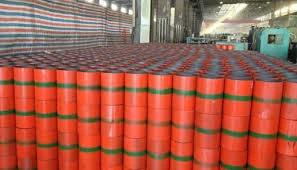- Afrikaans
- Albanian
- Amharic
- Arabic
- Armenian
- Azerbaijani
- Basque
- Belarusian
- Bengali
- Bosnian
- Bulgarian
- Catalan
- Cebuano
- Corsican
- Croatian
- Czech
- Danish
- Dutch
- English
- Esperanto
- Estonian
- Finnish
- French
- Frisian
- Galician
- Georgian
- German
- Greek
- Gujarati
- Haitian Creole
- hausa
- hawaiian
- Hebrew
- Hindi
- Miao
- Hungarian
- Icelandic
- igbo
- Indonesian
- irish
- Italian
- Japanese
- Javanese
- Kannada
- kazakh
- Khmer
- Rwandese
- Korean
- Kurdish
- Kyrgyz
- Lao
- Latin
- Latvian
- Lithuanian
- Luxembourgish
- Macedonian
- Malgashi
- Malay
- Malayalam
- Maltese
- Maori
- Marathi
- Mongolian
- Myanmar
- Nepali
- Norwegian
- Norwegian
- Occitan
- Pashto
- Persian
- Polish
- Portuguese
- Punjabi
- Romanian
- Russian
- Samoan
- Scottish Gaelic
- Serbian
- Sesotho
- Shona
- Sindhi
- Sinhala
- Slovak
- Slovenian
- Somali
- Spanish
- Sundanese
- Swahili
- Swedish
- Tagalog
- Tajik
- Tamil
- Tatar
- Telugu
- Thai
- Turkish
- Turkmen
- Ukrainian
- Urdu
- Uighur
- Uzbek
- Vietnamese
- Welsh
- Bantu
- Yiddish
- Yoruba
- Zulu
ਜਨਃ . 21, 2025 04:44
Back to list
Caing Coupling
Casing and tubing are two essential components in the oil and gas industry, integral to the drilling and production processes. Though they may seem similar, they serve distinct functions and have notable differences critical to understanding for industry professionals.
The materials used for casing and tubing are another differentiating factor, dictated by their functions and the environmental conditions of the wellbore. Casings are often designed with greater thickness and strength to handle external pressures from surrounding formations. Tubing, however, is generally thinner as it needs to accommodate dynamic pressure and temperature changes inside the pipeline. When selecting casing and tubing, considerations such as the well's depth, expected reservoir pressure, and temperatures are crucial. Advanced materials and designs may be employed based on specific well conditions, such as corrosive environments or high-temperature reservoirs. Having clear insight into the differences between casing and tubing is vital not only for installation and operational efficiency but also for safety and environmental protection. Inappropriate selection or installation can lead to catastrophic failures such as blowouts or reservoir leakage, compromising the project's economic viability and environmental safety. The authority in implementing an effective casing and tubing plan comes from understanding these elements' intricate details and differences. It’s a combination of solid engineering principles and practical know-how that defines a successful approach in the oil and gas industry. For those immersed in the industry or investing in related technologies, recognizing the distinctions and purposes of casing and tubing enriches one's expertise and trustworthiness in decision-making processes. This awareness supports safer, more efficient, and environmentally resilient oil and gas extraction operations.


The materials used for casing and tubing are another differentiating factor, dictated by their functions and the environmental conditions of the wellbore. Casings are often designed with greater thickness and strength to handle external pressures from surrounding formations. Tubing, however, is generally thinner as it needs to accommodate dynamic pressure and temperature changes inside the pipeline. When selecting casing and tubing, considerations such as the well's depth, expected reservoir pressure, and temperatures are crucial. Advanced materials and designs may be employed based on specific well conditions, such as corrosive environments or high-temperature reservoirs. Having clear insight into the differences between casing and tubing is vital not only for installation and operational efficiency but also for safety and environmental protection. Inappropriate selection or installation can lead to catastrophic failures such as blowouts or reservoir leakage, compromising the project's economic viability and environmental safety. The authority in implementing an effective casing and tubing plan comes from understanding these elements' intricate details and differences. It’s a combination of solid engineering principles and practical know-how that defines a successful approach in the oil and gas industry. For those immersed in the industry or investing in related technologies, recognizing the distinctions and purposes of casing and tubing enriches one's expertise and trustworthiness in decision-making processes. This awareness supports safer, more efficient, and environmentally resilient oil and gas extraction operations.
Next:
Latest news
-
Tubing Pup Joints: Essential Components for Oil and Gas OperationsNewsJul.10,2025
-
Pup Joints: Essential Components for Reliable Drilling OperationsNewsJul.10,2025
-
Pipe Couplings: Connecting Your World EfficientlyNewsJul.10,2025
-
Mastering Oilfield Operations with Quality Tubing and CasingNewsJul.10,2025
-
High-Quality Casing Couplings for Every NeedNewsJul.10,2025
-
Boost Your Drilling Efficiency with Premium Crossover Tools & Seating NipplesNewsJul.10,2025
Related Products







